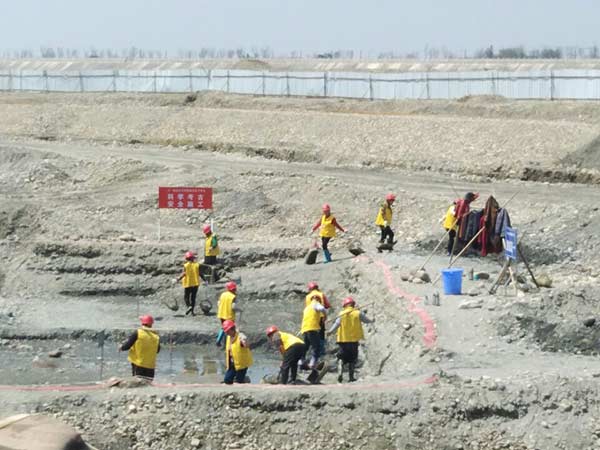Dig verifies ancient treasure comes from Zhang Xianzhong's sunken boats
More than 10,000 cultural relics that sank to the bottom of the Minjiang River in Sichuan province nearly 400 years ago have been found in the Pengshan district of Meishan, Sichuan province, since an archaeological dig started in early January.
The items include gold, silver and bronze coins, jewelry, iron swords, spears, rings, earrings and hairpins. They provide proof that the river is where Zhang Xianzhong fought against a local general in 1646 and left countless treasures in his sunken boats, according to the Sichuan Provincial Cultural Relics and Archaeology Research Institute.
Zhang (1606-46) was a leader of a farmers' uprising in the late Ming dynasty (1368-1644). A native of Shaanxi province, he captured Chengdu, Sichuan, and declared himself emperor in 1644. Two years later, Zhang deserted the city, planning to move to neighboring Hubei province.
Local chronicles show that Zhang and his troops were ambushed on the Minjiang River by Yang Zhan, a Ming general who set Zhang's boats on fire. About 1,000 boats sank.
From the 1950s to the 1990s, silver washed up on the shores of the Minjiang River, believed to come from Zhang's boats.
Building a water diversion project for Pengshan, then a county, in 2005, excavators found a hollowed-out log with seven silver ingots from a site about 2.5 meters below the surface of the riverbed.
In 2011, workers found substantial amounts of gold and silver items and coins while digging sand for construction purposes. The discovery prompted people wishing to strike it rich to search for treasure in the river course.
In October last year, police in Meishan announced that after a more than one-year investigation, they had found 10 gangs of illegal relic diggers and nine illegal relic trading networks involving 70 people who had traded more than 300 million yuan ($44 million) worth of relics from the riverbed.
Their illegal activities forced archaeologists to act, starting the first underwater archaeological venture in Sichuan, said Liu Zhiyan, head of underwater archaeology at the Sichuan Provincial Cultural Relics and Archaeology Research Institute.
Dykes were built to surround an area about 1,000 meters long and 100 meters wide in the Minjiang River in Pengshan. Water in the area had been drained away before the archaeological dig started on Jan 5.
Hundreds of meters of the riverbed were exposed as archaeologists dug five meters down to retrieve the relics.
"The gold and silver coins we found had words related to Zhang Xianzhong," Liu said.
There is one month to go before the flood season arrives. It is hoped more items will be found before the archaeological digging finishes in April, he said.
- Dig verifies ancient treasure comes from Zhang Xianzhong's sunken boats
- China to improve controls on Yangtze River water pollution
- New exercise routine for busy urbanites launched
- PLA Honor Guards to take part in Pakistan Day parade
- Shanghai's oldest amusement park to reopen on March 31




















